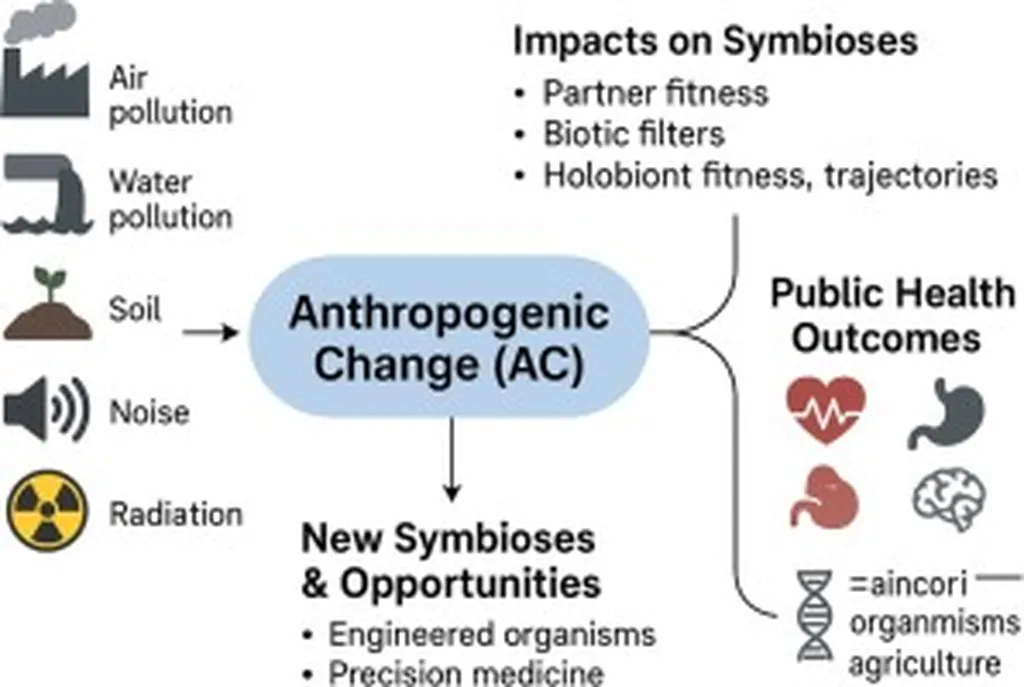In the heart of the Anthropocene, where human activity is the dominant influence on climate and the environment, a new study is shedding light on the intricate dance of symbiosis and its profound implications for public health and disease dynamics. Led by Md. Tanwir Akhtar from the Department of Public Health at the College of Health Sciences, Saudi Electronic University, this research delves into the complex web of symbiotic relationships, revealing how anthropogenic changes are reshaping these interactions and, consequently, our health.
The study, published in *The Microbe* (translated to English as “The Microbe”), explores the diverse effects of human-induced changes on symbiosis, a relationship where two or more organisms live closely together, often to the benefit of both. “Symbiotic links emerge as crucial players in the Anthropocene’s dynamic environment, dictating ecological paths and shaping responses to anthropogenic change,” Akhtar explains.
The research highlights how human activities, from agriculture to urbanization, are altering symbiotic relationships at both the genetic and ecosystem levels. For instance, the study points to the reduced presence of Bacteroides, a type of gut bacteria, linked to obesity, and the increased presence of Firmicutes, another type of bacteria, associated with metabolic disorders. These changes in our microbial partners can have significant implications for public health.
Moreover, the study reveals how anthropogenic changes can promote symbiogenesis, the process by which new symbiotic relationships form. This can happen when human activities create new niches, introduce different partners, or alter selection patterns. For example, sedimentation from human activities can affect coral reef microbiomes, leading to new symbiotic relationships that can either bolster or disrupt ecosystem resilience.
The study also introduces a new typology and paradigm to define the effects of anthropogenic change on symbiosis, incorporating differences in partner choice, niche availability, and adaptive pathways. This framework can help researchers and policymakers better understand and navigate the complex web of symbiotic relationships in our changing world.
The implications of this research extend beyond public health. In the energy sector, understanding symbiotic relationships can aid in the development of biofuels and other sustainable energy sources. For instance, certain symbiotic relationships can enhance the growth and productivity of biofuel crops, making them more viable and sustainable.
Furthermore, the study emphasizes the urgent need to integrate microbial and ecological symbioses into conservation and public health strategies. This holistic approach can help us build more resilient ecosystems and healthier communities in the face of ongoing anthropogenic changes.
As we continue to shape our planet, it is crucial that we understand the intricate web of life that supports us. This research by Akhtar and his team is a significant step in that direction, providing valuable insights into the symbiotic relationships that underpin our health and our world. As Akhtar puts it, “Symbiosis emerges as a lens to understand the fundamental interconnection of biological forms and ecosystems in an anthropogenic change–marked world.”

